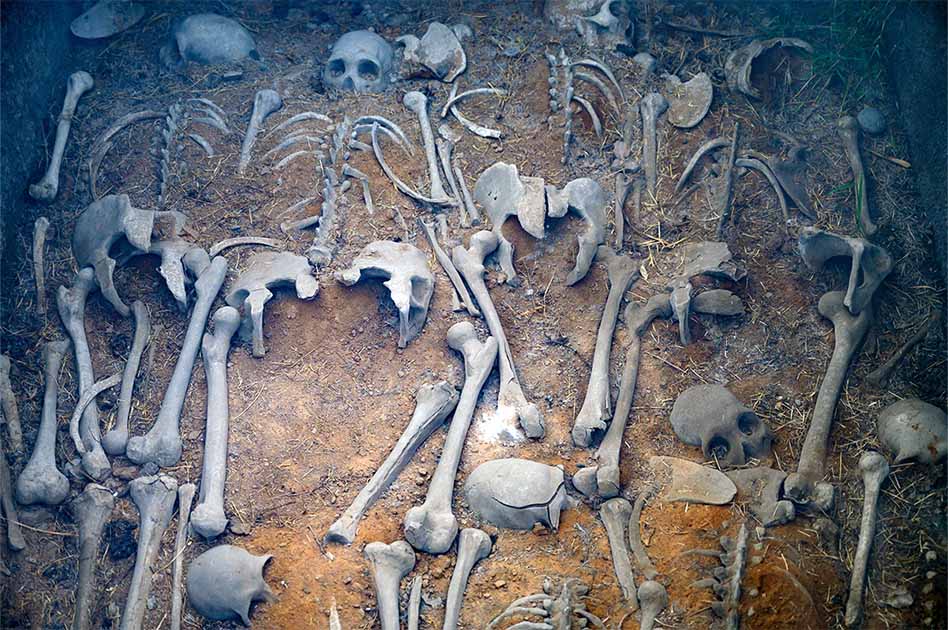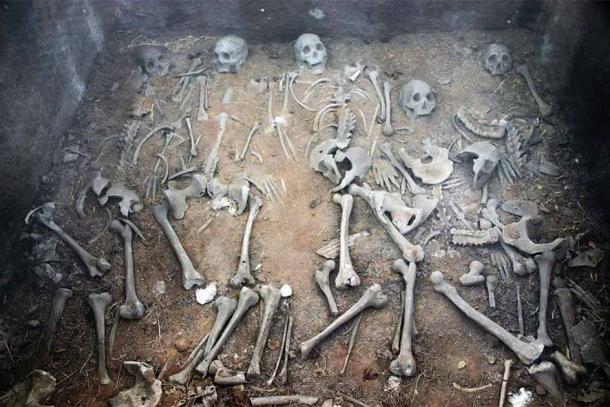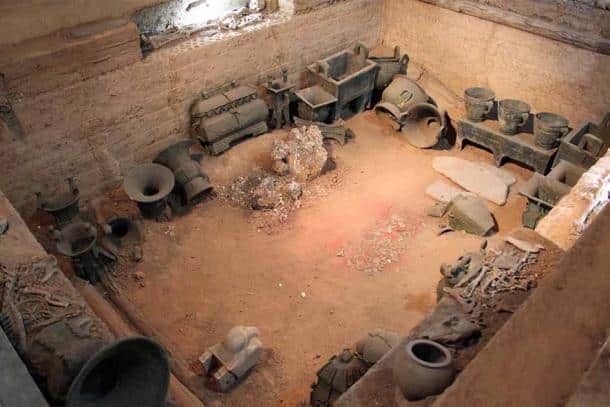The sinister secret of the Shang dynasty: its penchant for human sacrifice
The Shang dynasty, one of ancient China’s earliest recorded dynasties, is renowned for its advancements in technology, art, and governance. However, beneath the surface of this sophisticated civilization lies a sinister secret: its dark and disturbing penchant for human sacrifice.
The practice of human sacrifice was deeply ingrained in the religious and social fabric of the Shang dynasty. It was believed that sacrificing humans, particularly prisoners of war and slaves, would appease the gods and ensure prosperity and protection for the kingdom. This gruesome ritual was carried out on a grand scale, with victims often numbering in the hundreds or even thousands.
Archaeological excavations at the Shang dynasty capital of Yin, modern-day Anyang, have unearthed chilling evidence of these sacrificial rituals. The most striking discovery was the Tomb of Fu Hao, a prominent Shang queen. Within the tomb, archaeologists found sacrificial pits containing the remains of more than 16 human victims, along with evidence of animal sacrifices and lavish offerings.
The victims of Shang human sacrifice were often subjected to unimaginable horrors. They were frequently tortured, mutilated, and even buried alive alongside the deceased elite. The purpose of such rituals was to ensure a smooth transition to the afterlife for the ruling class and to demonstrate their power and authority.
The Shang dynasty’s reliance on human sacrifice extended beyond religious ceremonies. It also played a role in political and military strategies. Sacrificing captives of war was seen as a way to demonstrate dominance over enemies and instill fear in neighboring regions. This brutal tactic served to solidify the dynasty’s rule and maintain control over its vast territory.
The exact reasons behind the Shang dynasty’s affinity for human sacrifice remain elusive. Some historians speculate that it was driven by a deeply rooted belief system that saw the shedding of blood as a necessary offering to the gods. Others suggest that human sacrifice served as a means of social control, reinforcing the hierarchical structure of Shang society.
Regardless of the underlying motivations, the Shang dynasty’s penchant for human sacrifice casts a dark shadow over its remarkable achievements. It serves as a reminder that even the most advanced civilizations can harbor deeply disturbing practices. The discovery and study of this sinister secret provides valuable insights into the complexities and contradictions of ancient Chinese culture.
In conclusion, the Shang dynasty’s association with human sacrifice stands as a chilling testament to the depths of its religious and social customs. While the civilization’s achievements continue to impress, we cannot overlook the dark side that existed alongside its advancements. The study of this sinister secret is a reminder that history is often a tapestry woven with both triumphs and horrors, revealing the multifaceted nature of human civilizations.
Hits: 5






